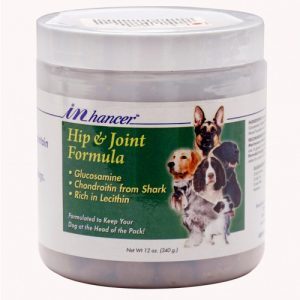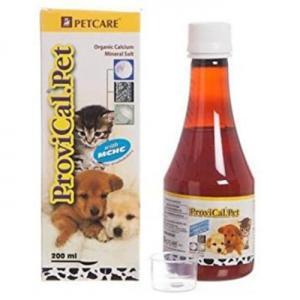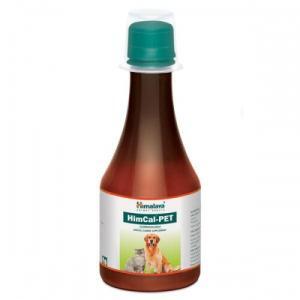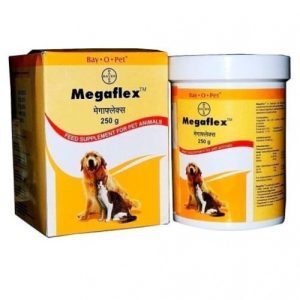Table of Contents
Arthritis causes chronic pain and discomfort in cats, decreasing their overall quality of life. Cats affected by arthritis may have difficulty moving, jumping, or grooming themselves properly. The pain can cause behavioral changes, such as irritability and decreased activity. If left untreated, arthritis can progress and worsen, leading to further joint damage and potentially irreversible complications. Treating rheumatoid arthritis in cats is essential to alleviate pain, improve mobility, and enhance their overall well-being, ensuring they can lead a more comfortable and active life.
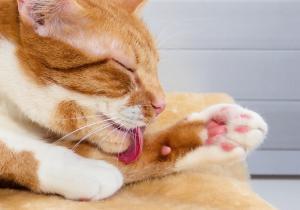
What Is Osteoarthritis in Cats?
Osteoarthritis in cats, also known as feline arthritis, is a degenerative joint disease that affects the cartilage and underlying bone in the joints. It is a common condition, especially in older cats, and can cause significant pain and discomfort. As cats age, the protective cartilage that cushions their joints may deteriorate, leading to friction and inflammation in the affected joints. Over time, this can result in joint stiffness, limited mobility, and chronic pain.
Osteoarthritis in cats can occur in joints such as the hips, knees, elbows, shoulder, and spine. The symptoms may vary depending on the location and severity of the condition. Common signs of feline arthritis include difficulty jumping, decreased activity levels, reluctance to play, limping, and behavioral changes like increased irritability or aggression.
Diagnosing osteoarthritis in cats usually involves a thorough physical examination by a veterinarian and X-rays or other imaging techniques to assess joint health. While osteoarthritis cannot be cured, various treatment options are available to manage the pain and improve the cat’s comfort and mobility. These may include chronic pain management in cat arthritis drugs, joint supplements, weight management, physical therapy, and environmental modifications to accommodate the cat’s limitations.
Early signs of arthritis in cats may help detect and manage feline osteoarthritis. It is essential to ensure that affected cats can lead a more comfortable and active life for as long as possible.
Who Is at Risk of Feline Osteoarthritis?
Feline osteoarthritis can affect cats of all ages, but it is more commonly seen in older cats. As cats age, the wear and tear on their joints increase, making them more susceptible to developing arthritis. However, age is not the only factor that can increase the risk of feline osteoarthritis. Other risk factors include:
- Obesity: Overweight and obese cats are at higher risk of developing arthritis because the extra weight strains their joints, leading to more rapid cartilage breakdown.
- Joint injuries or trauma: Cats that have suffered joint injuries or trauma in the past may be more prone to developing arthritis later in life.
- Genetics: Some cat breeds may have a genetic predisposition to developing osteoarthritis.
- Joint abnormalities: Cats born with joint abnormalities or developmental issues may have an increased risk of arthritis.
- Joint stress: Cats that engage in high-impact activities or repetitive motions that stress their joints may be more susceptible to developing arthritis.
- Inflammatory conditions: Cats with certain inflammatory conditions, such as feline immune-mediated polyarthritis, are at higher risk of developing osteoarthritis.
- Infections: Joint infections can lead to long-term joint damage and increase the risk of arthritis.
While these factors can increase the likelihood of feline osteoarthritis, it’s essential to remember that not all cats with these risk factors will develop the condition. Regular veterinary check-ups, proper nutrition, weight management, and addressing any joint issues can help reduce the risk and provide early intervention if arthritis does develop.
Symptoms of Feline Osteoarthritis
The symptoms of feline osteoarthritis can vary depending on the location and severity of the joint disease. Cats are masters at hiding signs of pain, so it’s essential to be observant and look for subtle changes in their behavior. Some common symptoms of feline osteoarthritis include:
- Decreased activity: Cats with arthritis, especially cats with arthritis in the front and hind legs or arthritis in cat knees, may become less active and spend more time resting or sleeping than usual.
- Stiffness: Cats may have difficulty getting up, be reluctant to walk or run, and exhibit stiffness, especially after rest periods (cats arthritis in toes).
- Limping: You may notice a slight or noticeable limp, which can vary depending on which joint is affected.
- Reluctance to jump: Cats with arthritis may avoid jumping up on furniture, countertops, or high places they used to enjoy (arthritis in cats’ paws).
- Altered gait: Their walking pattern might change, and they may walk stiff or slow (arthritis in cats’ back).
- Difficulty grooming: Arthritic cats may have trouble grooming themselves properly, leading to a scruffy or unkempt appearance.
- Irritability: Cats in pain can become more irritable and may react negatively to handling or petting, especially around the affected joints.
- Loss of appetite: Some cats may eat less due to the discomfort they experience when bending down to their food bowls.
- Licking or chewing joints: Cats may lick or chew at the painful joints to soothe themselves.
- Behavioral changes: Arthritic cats may become more withdrawn or less interactive than they were before.
It’s important to note that some of these symptoms can also indicate other health issues, so a proper veterinary examination is crucial for an accurate diagnosis. If you suspect your cat may have osteoarthritis, consult your veterinarian to develop a suitable management plan to improve their comfort and well-being.
Causes of OA
The exact causes of osteoarthritis (OA) in cats are not always clear, but several factors can contribute to developing this joint disease. Here are some of the common causes.
Age
As cats get older, the wear and tear on their joints increase, making them more susceptible to developing arthritis.
Obesity
Overweight and obese cats are at a higher risk of developing OA. The excess weight puts additional stress on their joints, leading to more rapid cartilage breakdown.
Joint Injuries or Trauma
Cats that have suffered joint injuries or trauma in the past may be more prone to developing arthritis later in life.
Genetics
Certain cat breeds may have a genetic predisposition to developing osteoarthritis. For example, breeds like Maine Coon and Persian cats have been associated with an increased risk.
Joint Abnormalities
Cats born with joint abnormalities or developmental issues may have an increased risk of developing arthritis.
Infections or Inflammatory Conditions
Joint infections or certain inflammatory conditions can lead to long-term joint damage and increase the risk of arthritis.
Immune-Mediated Diseases
Feline immune-mediated polyarthritis is an autoimmune condition where the cat’s immune system attacks its own joint tissues, leading to inflammation and joint damage.
Metabolic Disorders
Some metabolic disorders, such as diabetes or hyperthyroidism, can indirectly contribute to OA by affecting the cat’s overall health and metabolism.
Lifestyle and Activities
Cats engaged in high-impact activities or repetitive motions that stress their joints, such as jumping from high places or overexertion during play, may be more susceptible to developing arthritis.
It’s important to note that osteoarthritis in cats is often a multifactorial condition, meaning several of these factors may contribute to its development.
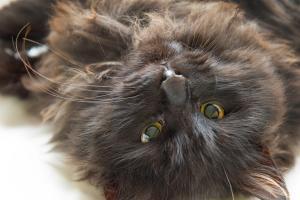
Diagnosis
How is arthritis diagnosed in cats?
Diagnosing osteoarthritis (OA) in cats involves a combination of physical examination, medical history, and diagnostic tests. Since cats are experts at hiding pain, detecting OA solely based on visible symptoms can be challenging. Here’s how veterinarians typically diagnose OA in cats.
Physical Examination
The veterinarian will perform a thorough physical examination, assessing the cat’s gait, joint mobility, and overall body condition. They may also palpate the joints to check for signs of swelling, warmth, or discomfort.
Medical History
The veterinarian will ask questions about your cat’s behavior, activity levels, and any changes you’ve noticed, such as difficulty jumping or reluctance to play.
X-rays (Radiographs)
X-rays are crucial for diagnosing OA. They allow the veterinarian to visualize the cat’s joints and assess the degree of joint degeneration, narrowing of joint spaces, bone spurs, and other changes typical of arthritis.
Joint Aspiration
In some cases, the veterinarian may perform a joint aspiration, using a needle to withdraw fluid from the affected joint. The fluid can be analyzed to rule out other potential joint diseases or infections.
Blood Tests
Blood tests may be conducted to rule out other conditions that can cause joint pain or inflammation, such as infectious diseases (infectious arthritis in cats) or autoimmune disorders (autoimmune arthritis in cats).
Elimination Diet
If the veterinarian suspects the cat’s joint pain may be linked to an inflammatory condition, they might recommend an elimination diet for arthritis in cats to identify potential food allergies or sensitivities.
Response to Pain Medications
Sometimes, if the veterinarian suspects OA but isn’t entirely sure, they may prescribe pain medications to see if the cat’s symptoms improve. A positive response to pain relief can provide valuable evidence for the diagnosis.
It’s essential to involve your veterinarian if you notice any changes in your cat’s behavior or mobility.
Safe Treatment of Osteoarthritis in Cats
What to do for arthritis in cats?
Indeed, treating arthritis problems in cats typically involves a multifaceted approach to manage pain, improve joint function, and enhance the cat’s overall well-being. So, how can you treat arthritis in cats? Here are some standard treatment options.
Proper Nutrition
Providing a balanced and appropriate diet is crucial for cats with OA. High-quality cat food can support joint health, and in some cases, special joint-supporting diets that contain omega-3 fatty acids and other beneficial nutrients may be recommended.
Weight Management
Maintaining a healthy weight is essential for cats with OA. Excess weight puts added stress on the joints, exacerbating pain and further damaging cartilage. A veterinarian can advise on appropriate feeding strategies and portion control.
Regular Exercises
Though cats may be reluctant to engage in strenuous exercises, gentle and controlled activities are essential to keep their joints mobile and muscles toned. Encouraging play and providing interactive toys can help keep cats active without overexertion.
Joint Supplements
Glucosamine and chondroitin sulfate are commonly used in joint supplements for arthritis in cats. These supplements help support cartilage health and joint function over time. Again, it’s essential to use products specifically designed for cats and consult with a veterinarian for the appropriate dosage.
Environmental Modifications
Making adjustments to the cat’s environment can enhance their comfort. Providing soft bedding, easy access to litter boxes, and steps or ramps to help them reach higher places can reduce the strain on their joints.
Physical Therapy
In some cases, physical therapy or rehabilitation may be recommended to improve joint flexibility and muscle strength in cats with OA. This can be especially beneficial for cats with mobility challenges.
Acupuncture and Laser Therapy
Alternative therapies like acupuncture and laser therapy have shown promise in managing pain and inflammation associated with OA in cats.
Medications
Non-Steroidal Anti-Inflammatory Drugs (NSAIDs) are commonly prescribed by veterinarians to help manage pain and reduce inflammation in cats with OA. However, using NSAIDs specifically formulated for cats is crucial, as some human medications can be toxic to them. Only administer arthritis pain relief in cats under veterinary supervision, especially if your cat needs an injection for arthritis.
The treatment plan should be tailored to each cat’s needs, and regular check-ups with a veterinarian are essential to monitor the cat’s progress and adjust the treatment as necessary. The goal is to provide the cat with the best possible quality of life while managing the symptoms of OA effectively. Our team recommends the following products.
Inhancer (Calcium, Phosphorus, Glucosamine, Shark Chondroitin, Lecitin), 340g
Inhancer supplement is one of the best medications for arthritis in cats. It supports joint health in high-activity and older dogs. It features top-quality glucosamine HCL and chondroitin, essential components for joint protection. The supplement includes active ingredients like calcium, phosphorus, glucosamine, and chondroitin sourced from sharks. It is recommended for dogs and cats with arthritis, hip and elbow dysplasia, senior pets, and large breeds to help minimize cartilage wear and tear, promoting better joint function and comfort.
Active Ingredients
- Calcium and Phosphorus: Both calcium and phosphorus are essential minerals for bone health and development. They are vital in maintaining strong bones and supporting overall skeletal structure.
- Glucosamine: Glucosamine is a natural compound found in healthy cartilage. It is believed to help support joint function by promoting cartilage repair and reducing joint inflammation.
- Shark Chondroitin: Chondroitin sulfate is another component of cartilage and is often derived from shark or other animal sources. It is thought to support joint health by helping maintain cartilage’s structural integrity and reducing cartilage breakdown.
- Lecithin: Lecithin is a phospholipid that can help support the absorption of fats and fat-soluble vitamins. It may play a role in the overall formulation of the supplement.
Benefits of using a joint supplement Inhancer for cats include:
- Supporting Joint Health: Combining glucosamine and chondroitin may help maintain healthy cartilage and reduce joint inflammation, which is essential in managing arthritis and other joint-related issues.
- Improving Mobility: By promoting joint health, the supplement may help improve a cat’s mobility and comfort, making it easier for them to move around and engage in daily activities.
- Slowing Down Joint Degeneration: The active ingredients, such as glucosamine and chondroitin, may help slow down the progression of joint degeneration and alleviate discomfort associated with aging joints.
- Supporting Bone Health: Calcium and phosphorus are essential for maintaining strong bones, which can contribute to overall joint health and mobility.
ProviCal (Calcium, Phosphorus, Vitamins D3, B12), 200ml
ProviCal Pet is a non-prescription medication for arthritis pain in cats. It is a specialized calcium supplement for puppies, kittens, lactating mothers, and dogs and cats with bone problems. It aids in re-mineralizing the bones of lactating female pets and provides essential calcium for the optimal growth and development of puppies and kittens. ProviCal can be administered directly into the mouth or easily mixed with food for convenient consumption.
Active Ingredients
- Calcium: Calcium is an essential mineral that plays a crucial role in maintaining strong bones and teeth. It also plays a role in muscle function, nerve transmission, and various cellular processes.
- Phosphorus: Phosphorus is another mineral that works with calcium to support bone health. It is a component of bones and teeth and is involved in energy metabolism.
- Vitamin D3: Vitamin D3, also known as cholecalciferol, is a fat-soluble vitamin that helps the body absorb and utilize calcium and phosphorus effectively. It is essential for maintaining proper bone health.
- Vitamin B12: Vitamin B12 is a water-soluble vitamin that plays a critical role in red blood cell formation, nervous system function, and DNA synthesis.
Benefits and Use
The combination of calcium, phosphorus, vitamin D3, and B12 in ProviCal may be used to support various aspects of overall health, including:
- Bone Health: Calcium and phosphorus are crucial for maintaining strong bones and teeth; vitamin D3 helps enhance their absorption and utilization.
- Muscle Function: Adequate calcium and phosphorus levels are essential for proper muscle function and overall mobility.
- Nervous System Support: Vitamin B12 is vital for properly functioning the nervous system.
- Red Blood Cell Formation: Vitamin B12 plays a role in producing red blood cells, essential for oxygen transport in the body.
When to Use
ProviCal may be used in various scenarios, such as during periods of growth for puppies, to support bone development and in older dogs or those with specific health conditions where additional nutritional support is required.
Himcal Pet Suspension (Phosphorous, Calcium), 200ml
Himcal for pets is an over-the-counter medication for arthritis pain in cats. It is a calcium and phosphorus supplement derived from oyster shells. The ratio of calcium to phosphorus in Himcal is 1:0.8, adhering to the Association of American Feed Control Officials (AAFCO) recommendations. This formulation ensures quick absorption and utilization within the body. Pets love its unique milky flavor. Himcal promote bone density and strength, contributing to their overall health.
Active ingredients
- Calcium: Calcium is an essential mineral that plays a vital role in maintaining healthy bones and teeth. It is essential for various physiological processes, including muscle function, nerve transmission, and blood clotting.
- Phosphorus: Phosphorus is another essential mineral that works with calcium to support bone health. It is a component of bones and teeth and plays a role in energy metabolism.
Benefits and Use
The combination of calcium and phosphorus in Himcal Pet Suspension supports various aspects of overall health, including:
- Bone Health: Calcium and phosphorus are crucial for maintaining strong bones and teeth, especially during pet growth and development.
- Muscle Function: Adequate calcium levels are essential for proper muscle function and overall mobility.
- Nerve Transmission: Calcium plays a significant role in transmitting nerve signals throughout the body.
- Energy Metabolism: Phosphorus is involved in energy metabolism and various cellular processes.
Megaflex (Vegetable Oils), 100g, 250g
Megaflex is a premium feed supplement by Bayer designed for cats and dogs of all ages. This versatile supplement aids in supporting bone growth and maintenance in our beloved pets. With its powerful formula, Megaflex effectively strengthens and promotes the healing of joints, cartilages, and tendons, contributing to better overall joint health for our furry companions, whether young or older.
The active ingredient in Megaflex is vegetable oils. Vegetable oils are essential oil for arthritis in cats, derived from various plant sources, such as soybean, corn, sunflower, canola, and olive. These oils contain essential fatty acids, including omega-3 and omega-6, which benefit overall health.
Benefits and Use
Vegetable oils, mainly those rich in omega-3 and omega-6 fatty acids, offer several potential benefits for pets:
- Healthy Skin and Coat: Omega-3 and omega-6 fatty acids promote healthy skin and a shiny, lustrous coat. They can help reduce dryness, itching, and flakiness in the skin.
- Joint Health: Some vegetable oils may have anti-inflammatory properties supporting joint health and mobility, especially in pets with arthritis or joint-related issues.
- Heart Health: Certain vegetable oils, like those high in monounsaturated fats (e.g., olive oil), can contribute to cardiovascular health and help maintain healthy cholesterol levels.
- Energy Source: Vegetable oils are a concentrated energy source, providing additional calories for pets with high energy needs or those needing to gain weight.
- Immune Support: Omega-3 fatty acids may support the immune system and help reduce inflammation.
Before introducing any new supplement or product to your pet’s diet, it is crucial to consult a veterinarian. They can assess your pet’s individual health needs and advise on the suitability and proper usage of the supplements. Additionally, they can explain how to get rid of arthritis in cats and guide the frequency of administration to ensure your pet receives the appropriate nutrients without any risk of over-supplementation.
How to Prevent Feline OA
Preventing feline osteoarthritis (OA) involves proactive measures to promote joint health and reduce the risk of joint damage. While some factors leading to OA, such as genetics and aging, cannot be controlled, there are steps you can take to minimize the likelihood of your cat developing this condition.
Ensure your cat is fed a balanced diet appropriate for their age and activity level because obesity is a significant risk factor for OA in cats. Regularly monitor their weight and consult a veterinarian to develop a weight management plan. Encourage your cat to engage in regular low-impact exercises. Playtime and interactive toys can help keep your cat active and maintain joint flexibility. Avoid high-impact activities that could injure your cat’s joints. Discourage jumping from high places or overexertion during play.
Consider providing your cat with joint supplements containing glucosamine and chondroitin. These can support joint health and reduce the risk of cartilage deterioration.
Make your cat’s environment more joint-friendly. Provide easy access to their favorite spots, such as ramps or steps for reaching elevated places, and comfortable bedding to reduce joint strain.
Regular check-ups with a veterinarian can help detect joint issues early on. Your vet can monitor your cat’s joint health and suggest necessary interventions.
Provide clean, fresh water to keep your cat well-hydrated. Adequate hydration is essential for joint health.
Address any infections or injuries promptly to prevent long-term joint damage. Keep an eye on your cat’s behavior and look for signs of joint discomfort, such as limping, reluctance to jump, or changes in grooming habits. Early detection can lead to timely interventions.
Remember that every cat is unique; some may be more prone to developing OA due to genetics or other underlying factors. By following these preventive measures, you can promote your cat’s joint health and overall well-being, reducing the risk and severity of feline osteoarthritis.
FAQ
Can Gabapentin Be Used for Arthritis in Cats?
Veterinarians sometimes prescribe gabapentin to manage chronic pain associated with arthritis in young cats. It is an anticonvulsant medication that can also help alleviate nerve-related pain. However, its use should be strictly under the guidance and prescription of a veterinarian, as dosage and potential side effects need to be carefully monitored.
Can I Give Aspirin for Arthritis in Cats?
Aspirin is generally not recommended for cats with arthritis due to their unique metabolism. Cats lack certain liver enzymes necessary to process aspirin, which can lead to toxicity and potentially life-threatening complications. Never give human medications, including aspirin, to cats without veterinary supervision.
Can Weather Affect Arthritis in Cats?
Just like in humans, weather changes can affect cats with arthritis. Cold and damp weather may worsen joint pain and stiffness in some cats. A warm and comfortable environment can help alleviate discomfort during such weather conditions.
How Do I Know If My Cat Is in Pain from Arthritis?
Cats are skilled at hiding pain, but some common signs of arthritis-related pain include limping, difficulty jumping, reluctance to play, changes in grooming habits (especially around painful joints), decreased activity levels, and irritability when handled or petted.
How to Tell If My Cat Has Arthritis in Hips?
If your cat has arthritis in the hips, you may notice them having difficulty standing up, reluctance to climb stairs or jump, a change in their gait (stiffness or swaying), and showing discomfort when the hips are touched or manipulated.
Is Severe Arthritis in Cats Fatal?
Severe arthritis itself is not typically fatal. However, it can significantly impact a cat’s quality of life and lead to mobility issues and chronic pain. Proper management and treatment can help improve the cat’s comfort and well-being.
What Age Does Arthritis Start in Cats?
Arthritis can develop in cats at any age, but it is more commonly seen in older cats, particularly those over the age of 8 years. However, arthritis can also occur in younger cats, especially if they have joint abnormalities or other predisposing factors.
Does Heat Help to Treat Arthritis in Cats?
Applying heat, such as with a warm towel or heating pad, can help alleviate arthritis-related stiffness and discomfort in some cats. However, always consult a veterinarian before using heat therapy, as it may not be suitable for all cats, and excessive heat can cause burns. Cold therapy might be more appropriate for inflamed joints.


